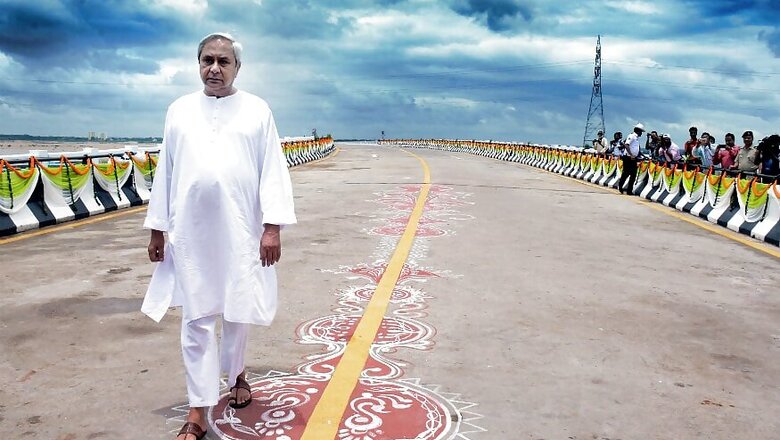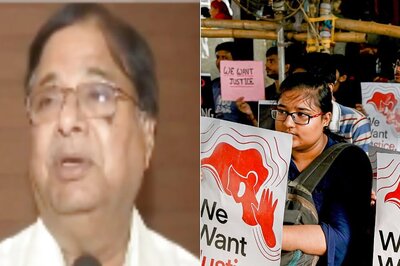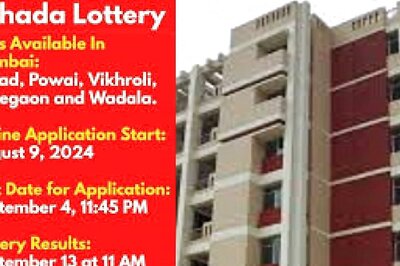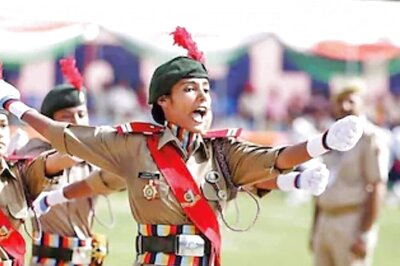
views
New Delhi: The Naveen Patnaik-led Biju Janta Dal is predicted to win 12-14 seats in Odisha, with the BJP making inroads and improving its tally to six to eight, up from the solitary seat it bagged in the 2014 elections.
The BJD, which swept the state last time round and won 20 of the 21 seats, may witness a decrease in its influence, according to the News18-IPSOS exit poll. The Congress, which failed to win a single seat in 2014, is predicted to open its account this time.
On the other hand, the India Today Axis predicted the decimation of the BJD to just two to six seats, with the BJP getting 15-19 and the Congress zero or one. Times-Now VMR also predicted that the BJP would lead with 12 seats, with the BJD getting eight and the Congress just one.
Republic C-Voter predicted 11 seats for the BJD, 10 for the BJP, and none for the Congress. ABP-Nielsen predicted 12 seats for the BJD, nine for the BJP and zero for the Congress.
Since the four-phase polls for the eastern state’s 147-member Assembly and 21 Lok Sabha seats came to a nailbiting end on April 29, the most asked question was whether the outcome would make Odisha’s longest-serving chief minister happy. For 72-year-old Patnaik, who has served as chief minister for four successive terms, these polls have been the toughest.
With a resurgent and irrepressibly ambitious BJP having used its organisational might and popular rhetoric of five-year rule at the Centre during campaigning, the regional party’s much-vaunted invincibility under Patnaik has certainly appeared shaken. But whether the saffron party would manage to cut short Patnaik’s march to a fifth straight term in power is anybody’s guess.
Counting of votes for both Lok Sabha and Assembly seats in the state would be held on May 23.
Even though it was a fierce triangular contest in Odisha with the BJD, BJP and Congress in the race, for the most part the main fight was between candidates of the ruling BJD and the BJP. Both Prime Minister Narendra Modi and BJP chief Amit Shah campaigned extensively across Odisha, along with several top leaders from the party and targeted BJD and Patnaik directly.
The BJP’s elaborate campaign structure and idiom indicated that the national party was also keen to wrest the state from the BJD’s grip. The Congress, on the other hand, ran a comparatively low-key campaign despite being the main opposition party in the state. Congress leaders were disappointed that party president Rahul Gandhi did not “give enough attention” to Odisha during the polls.
While a wide array of issues related to the state jostled for the electorate’s attention during the campaign, the polls were fought mainly on the Patnaik-versus-Modi axis. Patnaik, despite not being in the best of health, addressed close to 100 rallies, the highest in any election season. He also contested from two Assembly constituencies for the first time in the 19 years he has been chief minister. Modi addressed 10 campaign rallies in the state and Shah six while several Union ministers from the BJP also campaigned extensively.
Congress chief Rahul Gandhi addressed only five rallies in the state.
The BJP, which ruled Odisha as a BJD ally with Patnaik as chief minister between 2000 and 2008, has been steadily gaining strength in the state in the past decade. The saffron party had won only one of the 21 Lok Sabha seats (Union minister Jual Oram from Sundargarh) and just 10 of the 147 Assembly seats in the 2014 polls, while the BJD won 117 Assembly seats and 20 Lok Sabha seats.
In those polls, the Congress had won just 16 Assembly seats. In the previous polls in 2009, which the BJD and the BJP fought separately for the first time after their alliance ended, the saffron party won just six Assembly seats and no Lok Sabha seat. In those polls, the BJD had won 14 Lok Sabha seats and 103 Assembly seats, while Congress had won 27 Assembly seats and six Lok Sabha seats.
Significantly, while a triangular contest this time meant that anti-BJD votes got divided between BJP and Congress, thus giving the BJD a clear advantage, a considerably weak campaign by the Congress ensured a direct fight between the BJD and the BJP almost across the state. A robust campaign by the BJP, led from the front by the Modi-Shah duo, appeared to be eroding the Odisha people’s penchant to unquestioningly accept Patnaik as their leader despite his clean image.
But Patnaik, son of legendary Odisha leader and former chief minister Biju Patnaik, hopes to win a fifth term on the back of his massive popularity in the state. He came into politics as a reluctant leader after his father’s death in 1997 and remained a recluse all along, but he has mastered the art of quietly pulling the strings within the party and the government and has emerged as an astute player in state politics.
BJD leaders take pride in the fact that theirs is perhaps the only party in the country whose tally has increased in every successive election, both in terms of seats and vote share. They shrug off any suggestion of anti-incumbency, claiming that Odisha would have none of it until Patnaik is at the helm. But with the high-profile defections that the BJD has witnessed in the run-up to the polls and the nationalist spirit reawakened among voters, BJP leaders see a silver lining that is bigger than the cloud.
It was in May 2000 that Patnaik first became chief minister and began a new chapter in the state’s politics, surprising political pundits and shocking detractors. The May of 2019 is poised to be a turning point for him, the party he founded, and the fortunes of the eastern state.

















Comments
0 comment